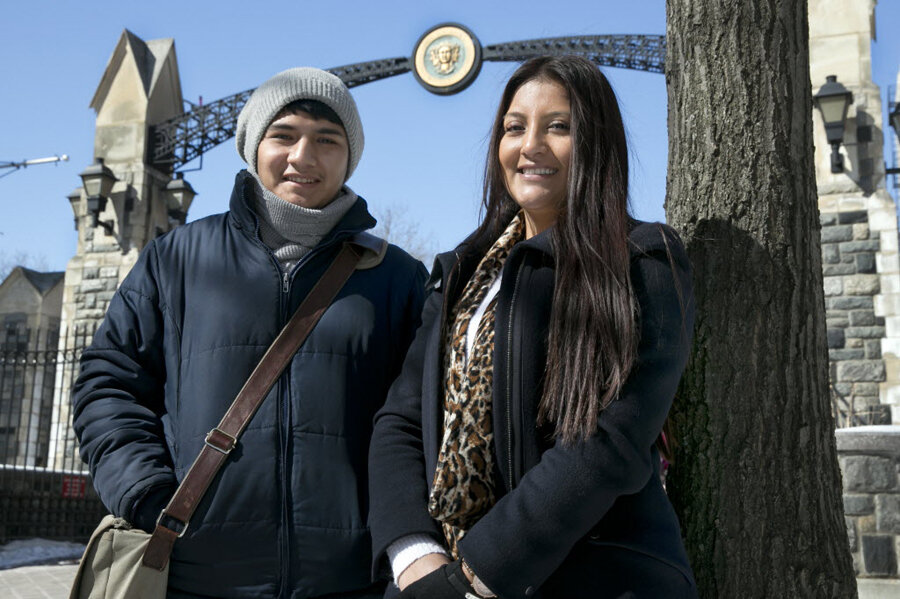DREAM Act fails in New York, but movement makes headway elsewhere
Loading...
| New York
Plans to extend financial aid to undocumented college students in New York collapsed once again this week after Gov. Andrew Cuomo (D) removed the measure from state budget negotiations.
It’s become an almost annual ritual for legislators in Albany, as the state’s senate Republicans, with the help of a few Democrats, continue to resist implementation of a Development, Relief, and Education for Alien Minors Act. The so-called DREAM Act would make an estimated 4,500 undocumented students in New York eligible for tuition assistance. Officials estimate the proposal would cost the state about $27 million.
Federal versions of such bills have long stalled in Congress. Even so, more modest versions of Dream Act proposals have made headway in an increasing number of states, including a number of red-state bastions who have previously resisted such reforms.
- In Utah, which already offers in-state tuition rates to undocumented students, state legislators have eased restrictions on publicly-funded scholarships.
- In Indiana, the Republican-dominated Senate is now considering extending in-state tuition to qualified students without papers.
- Tennessee, too, is considering a bill to allow its some 25,000 undocumented students to pay in-state tuition rates, just a third of the rate paid by out-of-state residents.
“I think the movement towards providing financial aid has picked up in recent years,” says Tanya Broder, senior attorney with the National Immigration Law Center in Los Angeles. At least seven states, including Texas, California, New Mexico, and Oklahoma, each with substantial immigrant populations, offer both tuition equity and some kind of financial aid for undocumented students.
And of the 13 additional states that also allow the “DREAMers” to qualify for in-state tuition, some, like New Jersey, Connecticut, and probably New York again later this year, will consider extending them financial aid as well.
Such movement make advocates hopeful that the national landscape surrounding immigration reform is beginning to change. “[These policies] are starting to be seen not only as both a wise policy choice, but also a wise political choice,” says Ms. Broder. “And as our country changes, that’s only going to be more true,” she says, noting the growth of the country’s Latino population, nine out of 10 who support such policies.
“These are children who grow up with every other child,” Broder continues, “and one of the things we’ve documented is that when a tuition equity policy is in place, and when college is more affordable, that it reduces the high school dropout rate, not only for the undocumented students, but also for their peers.”
But at the same time, Republican opposition remains strong in many states. New York’s Senate majority leader, Dean Skelos (R), “doesn’t believe taxpayers should cover the cost of free college tuition for illegal immigrants while hardworking, middle-class families here legally take out student loans that will take them years to repay,” said his spokesman Tuesday, according to The New York Times.
Texas was one of the first to enact DREAM Act legislation more than a decade ago, offering some state aid for undocumented students, but the bolstered Republican majority in the legislature and newly elected Gov. Greg Abbott have been moving to repeal the state’s long-standing policy.
Georgia, Alabama, and South Carolina, however, already have issued policies banning or restricting the enrollment of undocumented students.
After the failure of federal DREAM Act legislation, President Obama issued an executive order, Deferred Action for Childhood Arrivals, allowing some younger undocumented immigrants to receive work permits and exemptions from deportation. Texas and 25 other states filed suit in federal court challenging the president's executive action, and a federal judge blocked implementation pending a decision.
But recent polls have indicated that a majority of Americans support immigration reforms. Sixty percent support a path to citizenship for illegal immigrants if they meet certain requirements, a survey for the Public Religion Research Institute found in February, noting that such majorities now exist in all 50 states.






